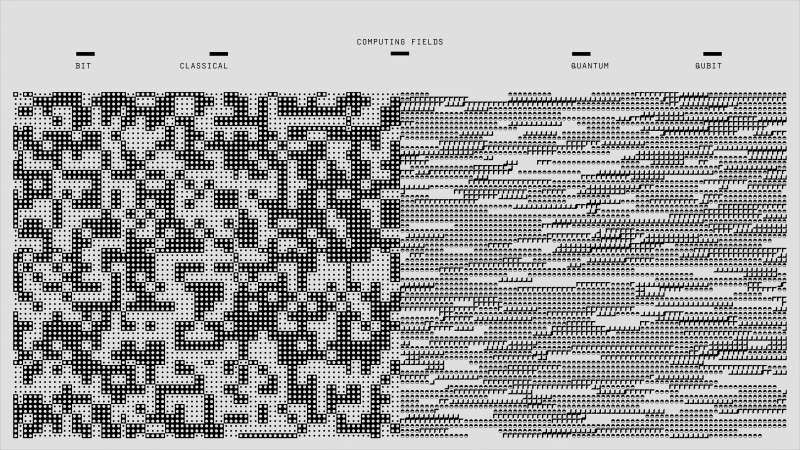Employee Engagement and Satisfaction Technologies: The Digital Path to a Happier Workforce
Published on: May 2, 2025
In an age where the workforce is becoming increasingly hybrid, digital, and diverse, the concept of employee engagement and satisfaction has never been more critical—or more complex. Gone are the days when a simple year-end survey or casual chat over coffee sufficed to gauge how employees feel about their jobs and workplace. Today, organizations are turning to a new arsenal of digital tools and intelligent technologies to measure, track, and improve employee engagement and satisfaction. From real-time feedback systems and mood tracking tools to gamified recognition platforms and AI-powered behavioral analytics, the modern company now has access to a wide range of solutions to better understand and support its people.
In this comprehensive exploration, we’ll delve deep into the types of technologies reshaping the employee experience, the psychology behind their success, real-world examples of their application, and the ethical considerations that must guide their implementation.
1. The Shift Toward Employee-Centric Technology
Why Engagement and Satisfaction Matter
Research consistently shows that engaged employees are more productive, innovative, and loyal. According to Gallup, businesses with high levels of engagement see 21% higher profitability and up to 59% lower employee turnover. But engagement is more than just satisfaction. It's the emotional commitment an employee has toward the organization and its goals. Satisfaction, on the other hand, focuses more on day-to-day workplace contentment. Both are essential, and both can be influenced dramatically through targeted technological interventions.
2. Real-Time Feedback Platforms
What They Do
Real-time feedback systems are at the forefront of employee engagement tech. Platforms like Officevibe, Culture Amp, Peakon, and TinyPulse allow organizations to send out regular pulse surveys, gather feedback anonymously, and generate insights almost instantly.
Key Features
-
Weekly or bi-weekly pulse check-ins
-
Customizable survey templates
-
Sentiment analysis and engagement score tracking
-
Actionable insights and reports for managers
-
Anonymized comment threads for open communication
Benefits
-
Immediate feedback loops allow for quicker response and adjustment.
-
Employees feel heard on an ongoing basis.
-
Promotes a culture of continuous improvement and transparency.
Use Case
A tech startup with 120 employees used Officevibe to implement weekly surveys and discovered through the analytics that their product team felt isolated during sprints. With this data, they restructured internal communication and began weekly cross-functional meetings. The result was a 17% increase in engagement within three months.
3. Gamification of Engagement
The Rise of Game Mechanics in Workplaces
Gamification refers to integrating game-like elements into non-game environments to boost motivation and participation. Tools like Bunchball, Kudos, Kazoo, and Motivosity enable companies to assign points, badges, and rankings for behaviors aligned with company values or specific performance targets.
Common Gamified Elements
-
Leaderboards
-
Daily challenges or missions
-
Virtual rewards and milestones
-
Peer recognition and team competition
Psychology Behind Gamification
Gamification taps into intrinsic motivators such as:
-
Autonomy: Giving employees control over their achievements
-
Mastery: Offering clear progress indicators
-
Purpose: Connecting actions to a larger goal
-
Social status: Recognition within peer groups
Potential Pitfalls
-
Risk of over-competition or manipulation
-
Can become superficial if not tied to meaningful outcomes
-
May alienate less extroverted team members
Best Practices
-
Combine with verbal/written recognition
-
Align gamification with real business outcomes
-
Customize for different departments or personality types
4. Sentiment and Mood Tracking Technologies
From Gut Feeling to Data-Driven Insight
Understanding how employees feel on a daily or weekly basis is one of the most elusive, yet important, aspects of human resource management. Today, companies are using AI-based sentiment tracking tools such as Humanyze, Emplify, Humu, and Qualtrics XM to decode emotional patterns and overall morale.
How It Works
These tools analyze various forms of digital communication—emails, chat messages, video calls—and can track mood through:
-
Tone of voice
-
Word choice and frequency
-
Communication patterns and rhythm
-
Non-verbal cues in video
Ethical Considerations
-
Employees must be informed and consent to monitoring.
-
Anonymity and data security must be prioritized.
-
Emotional analytics should be used to support—not surveil.
5. Employee Recognition Systems
The Power of Being Seen
Recognition is one of the strongest drivers of engagement. Platforms like Bonusly, Achievers, Nectar, and YouEarnedIt allow employees to recognize each other through points, badges, and public praise.
Impact on Culture
-
Encourages peer-to-peer appreciation
-
Reinforces desired behaviors and values
-
Builds a positive work atmosphere
Integration
These systems often integrate with collaboration platforms like Slack, Microsoft Teams, and email systems to allow for seamless engagement without switching apps.
6. Wellness and Mental Health Technologies
Prioritizing the Whole Person
A growing number of companies are investing in platforms that support employee well-being. Tools like Headspace for Work, Calm Business, and Modern Health provide employees with access to meditation, therapy, coaching, and stress management resources.
Features
-
Guided meditation and mindfulness sessions
-
One-on-one therapy or coaching
-
Stress level tracking
-
Burnout prediction using AI
ROI for Organizations
Studies have shown that organizations that invest in mental wellness see up to a 5x return in productivity, reduced absenteeism, and employee retention.
7. People Analytics and Predictive Insights
Making Engagement Measurable
Advanced HR platforms now offer People Analytics modules—data dashboards that provide comprehensive views into workforce engagement, satisfaction, and risks.
Tools like SAP SuccessFactors, Visier, and Workday aggregate data from performance reviews, collaboration platforms, surveys, and more to create predictive models for:
-
Attrition risk
-
Burnout probability
-
Team cohesion
-
Leadership effectiveness
Real-World Example
A Fortune 500 company used People Analytics to detect early signs of disengagement in its sales department. By analyzing slack usage, survey responses, and goal completion rates, the system flagged specific teams. HR intervened with new training and recognition programs, reducing planned exits by 28%.
8. Hybrid and Remote Work Engagement Tools
The New Normal Needs New Tools
As hybrid work becomes the standard, maintaining connection and engagement across geographies is paramount. Platforms like Donut, Lattice, 15Five, and xtimeto are helping to bridge the physical gap with features like:
-
Virtual coffee meetups
-
Weekly 1-on-1 check-in templates
-
Goal tracking and OKRs
-
Mood boards and reflection journals
xtimeto (https://xtimeto.com), for instance, goes beyond standard time-tracking by integrating mood and productivity tagging, allowing both employees and managers to visualize emotional trends alongside task performance.
Other similar tools include:
-
15Five: Combines goal tracking with employee sentiment.
-
CultureAmp Engage: Offers advanced feedback loops, analytics, and nudges for improved participation.
9. Visualizing Engagement: Comparison Table
| Platform | Primary Focus | Key Features | Best For |
|---|---|---|---|
| Officevibe | Real-time feedback | Pulse surveys, anonymity, analytics | Mid-sized teams |
| xtimeto | Hybrid work + mood tracking | Time logging, productivity + emotion tagging | Remote teams |
| Kudos | Gamified recognition | Badges, points, peer awards | Team motivation |
| Humanyze | Sentiment analytics | AI mood tracking via communication tools | Enterprise-level insight |
| 15Five | Engagement + performance | Weekly check-ins, OKRs, feedback loops | People-centric orgs |
| Culture Amp | Culture and engagement | Deep analytics, custom surveys, action plans | Organizations scaling culture |
| Calm for Work | Mental wellness | Guided meditations, stress management | Wellness-first cultures |
10. Ethical Considerations and Future Outlook
As engagement technologies become more embedded into daily workflows, ethical deployment becomes essential. Data privacy, transparency, consent, and fairness should guide every tool’s implementation. Employees should feel empowered, not observed.
Looking ahead, we can expect deeper integration of AI, VR-based team-building, real-time emotion tracking, and even biometric engagement tools (e.g., heart-rate monitoring for stress). These innovations will need to be balanced with humanity, trust, and empathy.
Technology alone cannot create a positive employee experience. But when implemented mindfully, it can amplify culture, improve communication, and empower people. The future of work belongs to organizations that blend data with empathy, and that use engagement technologies not just to measure people—but to support them.
The message is clear: employee engagement is no longer a “soft” HR concept. It is a strategic imperative, and technology is its most powerful ally.










